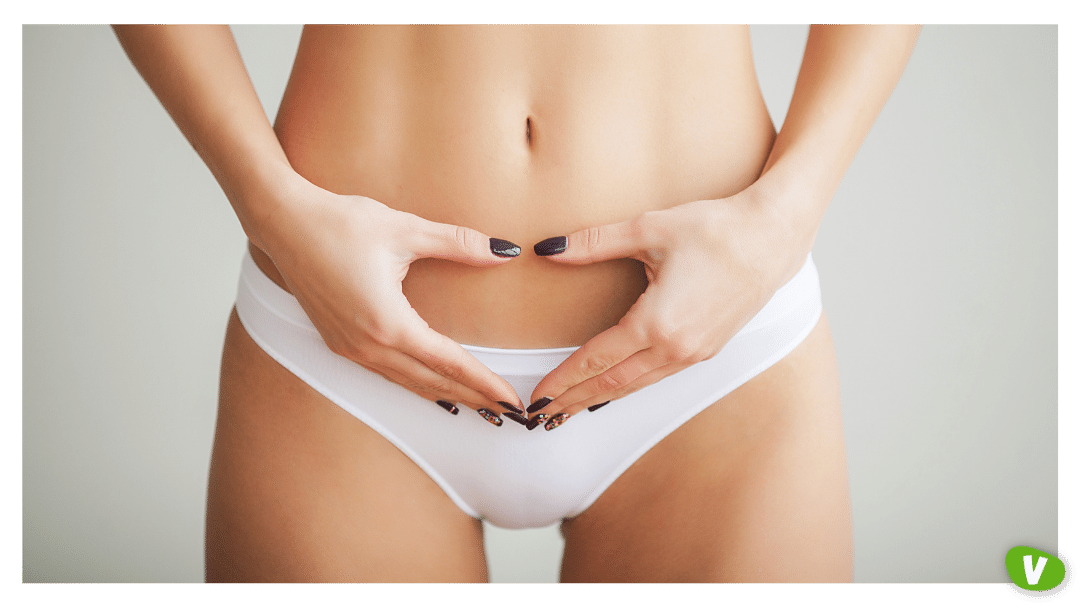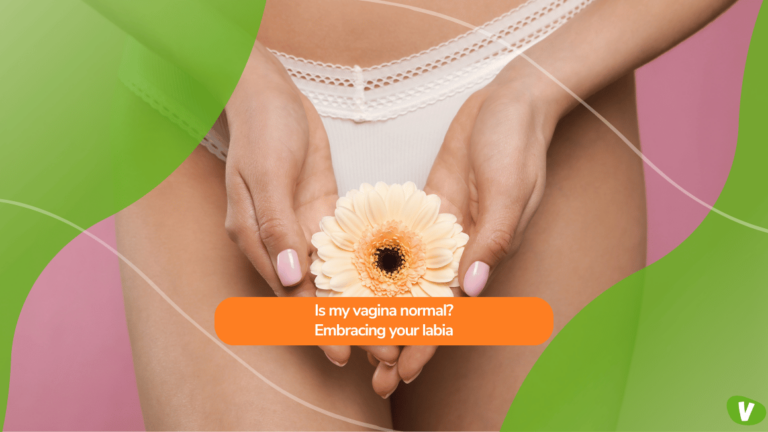If you’ve ever taken a peep at your anatomy with a handheld mirror, you might have wondered whether your vagina is normal or not.
In a society with immense pressure to look a certain way, worrying about your body is an unfortunately normal phenomenon. However, these feelings of stress and uncertainty can feel even more intense when you’re worrying about a body part that isn’t on show unless it’s in a pornographic movie.
- Is my vagina normal?
- Different labia sizes, shapes, and symmetry
- Does the way your vagina look change over time?
- What to do if you’re uncomfortable with how you look
- The takeaway
Today, we’re looking at what makes a normal vagina and what you need to know about your body.
Keep scrolling to get informed.
Is my vagina normal?
The internet is an amazing tool we use every day. However, there are some unpleasant side effects of it – such as misinformation and opinions that leave millions of women and girls feeling bad about their healthy genitals.
There are plenty of voices online that’ll tell you your labia is too long, uneven, or discoloured. But these opinions simply aren’t true, as labia come in all shapes and sizes. Like other body parts, variation is normal and should be celebrated!
What are labia?
Though we call the external part of the female genitalia a vagina, that’s not its actual name. The external part is called the “vulva”, and the internal section is the vagina.
The labia are the lips that frame the vagina. But labia is still a generalisation since you actually have two pairs of lips: the labia minora (inner lips) and the labia majora (the outer lips).
The labia majora are there to protect your inner parts, such as your clitoris, vaginal opening, and urethra. These usually have hair on (unless you wax or shave). Similarly, the labia minora are there for a protective purpose.
Why worries are normal
Worries about your genitalia are very common. So, if you’ve been stressing that you’re the only person who’s ever felt this way, don’t worry. It’s a very normal feeling for everyone.
However, what matters is how you move forward from these worries. The best way is to learn about your anatomy and understand that your appearance is normal. Be aware that how porn actors look might not be their natural shape (due to labiaplasty) and that you don’t need to change yourself to be attractive or healthy.
Scroll down to learn what makes a normal vulva!

Different labia sizes, shapes, and symmetry
There’s no one-size-fits-all for the way your vulva should look. Though some (uneducated) people focus on having a vulva with invisible lips and an even skin tone, approximately half of the ladies have inner lips (labia minora) that are longer than the outer lips.
We’re ready to change the messaging surrounding what a vulva “should” look like. Here’s everything you need to know.
Labia colour
Like facial complexions and skin tones, vulvas and labia also come in different colours. Typical skin tones for labia include brown, pink, reddish, and purplish tones. Often, the labia are slightly darker or more pigmented than your skin – just like your lips vs your face.
Labia size
One of the most common worries is labia size – specifically longer labia minora. While longer labia minora seem to cause the most stress, they’re completely normal, and around 50% of women have them. Like belly buttons, some women have innies, and some have outies. Longer labia minora are not cause for concern and don’t have any health complications.
Labia symmetry
Another common worry is labia symmetry or a lack thereof. Though we rarely notice it, our bodies aren’t very symmetrical. It’s rare to have a mirror-perfect symmetry, from breasts with different cup sizes to eyebrows with different arches. So, it’s perfectly normal if one of your labia is longer.
Understanding different labia
Millions of women worry about their anatomy, but unlike other body positivity movements, it’s hard to show off different labia and provide healthy inspiration to women worldwide.
However, Women’s Health Victoria has created the Labia Library to solve this issue. The Labia Library is dedicated to helping women see other vulvas and to understand how unique each one is. The website also answers common questions and provides advice to those feeling unsure about their own anatomy.
Does the way your vagina look change over time?
The way your vulva and labia look can change over time due to the ageing process and hormones. The most notable changes happen during puberty, when your labia will appear more prominent.
However, it’s essential to regularly check your body for lumps, moles, cysts, or ulcers. Like other body parts, any new growths should be checked out by a doctor to ensure they’re not harmful to your overall health.
If there is any pain or symptoms of STIs, you should also visit your doctor.

What to do if you’re uncomfortable with how you look
If you still feel uncomfortable with your vulva, there are some steps you can take to release the feelings and build a healthier relationship with your body:
- Practice self-compassion – Remind yourself that everyone has insecurities and that everyone looks different. Be kind to yourself and try to catch any negative self-talk
- Reach out to others for support – Speaking to others can help you contextualise your feelings. However, it can be uncomfortable to talk to friends and family about your genitalia. In this case, researching the topic or contacting a non-judgemental body image counsellor or therapist can help you work through difficult feelings
- Focus on your health – Some women find it helpful to focus on their health rather than appearance. You can visit your GP or gynaecologist to check out any health concerns or for confirmation that your vulva is healthy if needed
The takeaway
Getting comfortable with your vagina isn’t always an overnight fix. After years of negative self-talk and insecurities, it can be challenging to accept your body. However, know that your anatomy is normal, and you’re not alone in your feelings.
If something about your vulva or labia is bothering you, consider talking to a doctor for a professional medical opinion. Putting your health first is critical.
Learn more about sex and relationships today via the Vivastreet blog.





